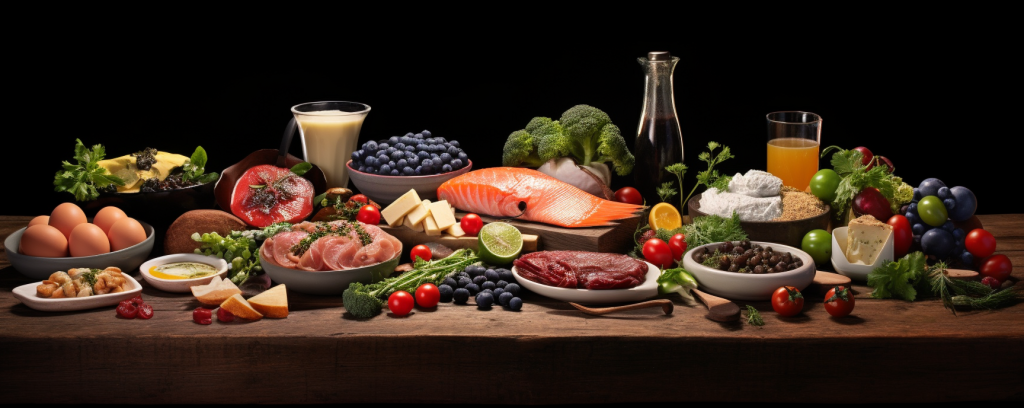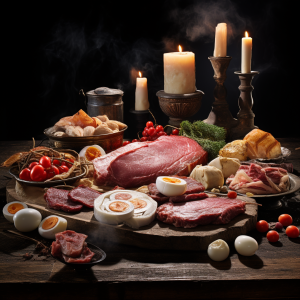Smooth Recovery: What to Eat After Gum Grafting for Optimal Healing
Last updated Thursday, June 13th, 2024

If you’re wondering what to eat after gum grafting, you’re not alone. Post-operative dietary choices are crucial for a speedy and successful recovery. This guide will provide you with a list of soft, nutritious foods that will keep your healing on track without compromising your comfort. Expect to discover meal recommendations that are gentle on your gums, support tissue repair, and help maintain oral health as you navigate through the initial days of recovery.
Key Takeaways
- Following gum graft surgery, patients should begin with a liquid diet for 48 hours, gradually reintroduce soft foods, and typically return to their regular diet within two weeks, ensuring gentle care and optimal healing of grafted tissue.
- A recovery diet should consist of soft foods high in essential nutrients, vitamins, and protein, such as oatmeal, eggs, pureed soups, soft fruits, and steamed vegetables, while avoiding hard, crunchy, or spicy foods that may hinder healing.
- Proper nutrition, eating strategies, and oral care—including hydration, avoiding straws, and possibly using a saltwater rinse—are critical for a comfortable recovery process and to prevent setbacks after gum graft surgery.
Navigating Your Diet Post-Gum Grafting
A balanced diet plays a significant role in the healing process, especially when deciding what to eat after gum grafting. Incorporating a soft food diet helps minimize the risk of damaging the grafted tissue, thereby promoting healing. Prioritize nutritious foods, cold drinks, and gentle snacks. These contribute not only to your recovery process but also to your long-term oral health.
The transition back to a regular diet should be gradual. Here is a suggested timeline:
- For the first 48 hours after surgery, stick to a liquid diet.
- After 48 hours, slowly reintroduce soft foods.
- Most patients return to their regular diet about two weeks post-procedure.
Adhering to this timeline aids in preventing long-term receding gums, gum recession, and gum disease.
Essential Soft Foods to Embrace After Gum Graft Surgery
Soft foods are your best allies during the recovery process. Soups, in particular, are gentle on your gums and an excellent source of essential nutrients. Adding soft vegetables can enhance their nutritional value.
Next, let’s delve into the essential soft foods for different mealtimes, while being mindful of acidic foods.
Breakfast Favorites
A nutrient-packed breakfast is an excellent way to start your day. Oatmeal, scrambled eggs, and yogurt are gentle on your gums and provide essential nutrients for healing. To add some flavor and nutrition, incorporate fresh fruit into your yogurt or oatmeal.
Remember, the goal is to eat foods that are soft and easy to chew. This approach helps you avoid straining your grafted gums, making your eating experience more comfortable and promoting healing.
Lunch and Dinner Delights
For lunch and dinner, consider options like pureed soups, mashed potatoes, and soft-cooked vegetables. These foods, gentle on your gums, provide vital nutrients aiding your recovery. Vegetables are rich in essential vitamins and minerals such as iron, magnesium, calcium, and protein, which aid in the recovery process.
Steaming or roasting vegetables renders them soft and comfortable to eat, allowing you to enjoy their full nutritional benefits. Some nutrient-packed pureed soup recipes you can try are:
- Creamy Roasted Garlic Cauliflower Soup
- Cream of Asparagus Soup
- Split Pea Soup
- Lentil Soup
- Minestrone
Snacks and Treats
Nutritious snacks and treats are also part of a balanced diet post-surgery. Some examples of gentle on the gums, soft fruits include:
- Bananas
- Berries
- Ripe mangos
- Ripe pears
These hard or crunchy fruits are excellent sources of essential vitamins and fiber.

- pasta salad
- frozen yogurt
- applesauce
- protein shakes
- homemade protein smoothies
- mashed potatoes
- pudding
- hummus
The Power of Nutrition in Your Recovery Process
Nutrition serves as a potent ally in your recovery process. It bolsters the immune system, curtails inflammation, and aids tissue growth and healing when you maintain a well-balanced diet. Understanding the roles of vitamins and proteins in healing is crucial to leveraging nutrition for your recovery.
Vitamin Champions for Gum Healing
When it comes to gum healing, Vitamins A and C steal the spotlight. Vitamin A stimulates cell reproduction and the immune system, while Vitamin C contributes to gum tissue repair and collagen biosynthesis.
Include foods rich in these vitamins in your diet. Carrots, sweet potatoes, kale, and spinach are high in vitamin A. To get your dose of Vitamin C, you can choose from a variety of vitamin C rich foods such as papaya, citrus fruits, strawberries, Brussels sprouts, broccoli, and bell peppers. These foods are all great options for meeting your Vitamin C needs. Leafy greens like Brussels sprouts and spinach are also excellent alternative sources of Vitamin C.
Protein’s Role in Tissue Repair
Protein plays a vital role in maintaining tissue and promoting wound healing. It facilitates tissue repair at a cellular level by driving metabolic reactions, maintaining pH and fluid balance, and supporting the immune system.

- Yogurt
- Omelets
- Applesauce
- Cheese
- Macaroni
- Rice
- Pasta
- Mashed potatoes
- Eggs
- Meat
- Poultry
- Fish
- Nuts
- Milk
- Cottage cheese
- Peanut butter
- Tofu
Foods to Avoid to Prevent Setbacks in Healing
Knowing what to eat is as important as understanding what foods to steer clear of. Hard, crunchy, and spicy foods can cause abrasions around the surgical site, hindering the healing process at the graft site.
The consumption of spicy foods can also lead to irritation and inflammation, which may impede the healing process. Following these dietary guidelines can contribute to a smooth recovery process.
Timing and Transition: When to Return to Regular Diet
The transition back to a regular diet varies among patients and largely depends on the healing progress of the gum graft. The average recovery period following gum graft surgery usually ranges from 7 to 14 days.
Despite the temptation to return to regular eating habits, it’s pivotal to confirm adequate healing of the area first. Always seek confirmation from your periodontist regarding when it is safe to resume a regular diet.
Hydration and Oral Care Post-Surgery
Besides maintaining a balanced diet, ensuring proper hydration is also crucial for your recovery. After your gum graft surgery, aim to consume eight glasses of water daily to ensure proper hydration.
Oral care is also vital. Refrain from using straws as they can disrupt the healing process. A saltwater rinse can also aid in reducing swelling, increasing blood flow, protecting against bacteria, reducing inflammation, and promoting a conducive oral environment for healing.
Strategies for Eating Without Discomfort
Post-gum graft surgery, eating doesn’t have to be a painful experience. Taking small bites lessens strain on the surgical area, lowering the likelihood of irritation or damage. Also, consider the temperature of your food and beverages. Hot foods can cause discomfort and harm to the newly grafted area, while cold foods may also lead to discomfort.
Frequently Asked Questions
How long after gum graft can I eat normally?
You can eat normally about 14 days after a gum graft once it has healed.
What not to eat after gum graft surgery?
Avoid spicy foods, acidic foods, sticky or chewy foods, and tough meats after gum graft surgery to prevent irritation, inflammation, and damage to the surgical site.
Can you drink coffee after a gum graft?
You should refrain from drinking hot drinks like coffee for at least 2-3 days after a gum graft to minimize trauma to the gums during healing.
What can you eat after a gum graft surgery?
You can eat soft and easy-to-chew foods like yogurt, mashed potatoes, and smoothies after a gum graft surgery. It’s important to avoid hard, crunchy, or spicy foods.
Why is hydration important after gum graft surgery?
Hydration is important after gum graft surgery to facilitate the healing process, so aim to consume eight glasses of water daily.
Get Started On Your New Smile
It's time you stop putting off your next dental visit. Whether it's a general check-up or a complex restorative or cosmetic procedure, the time to book your appointment is now!

